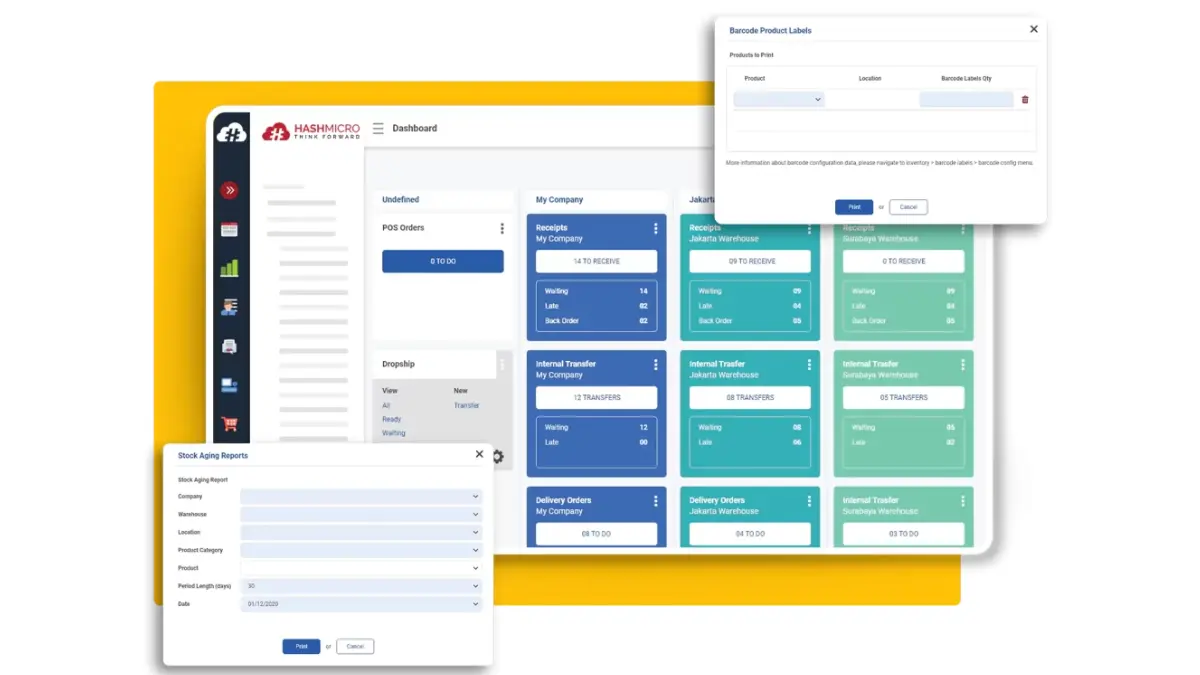Kamusta! Have you ever felt frustrated seeing products just sitting on your shelves, gathering dust, and tying up funds that could be used elsewhere? Dead stock is more than a nuisance—it’s a silent profit killer that inflates storage costs and can even make your inventory obsolete.
Effective management of dead stock is essential for maintaining financial health and optimizing operational space. Identifying the root causes of unsold inventory and using targeted strategies to convert it into revenue helps prevent the costly cycle of overstocking. Read on to find methods to revitalize your inventory management and boost profitability!
Key Takeaways
|
Table of Contents

What is Dead Stock?
 Deadstock refers to unsold inventory that remains on shelves well past its expected selling period, posing a risk of never being sold. Additionally, this type of stock can include various items, whether locally produced or sourced from suppliers, tying up valuable capital.
Deadstock refers to unsold inventory that remains on shelves well past its expected selling period, posing a risk of never being sold. Additionally, this type of stock can include various items, whether locally produced or sourced from suppliers, tying up valuable capital.
The ongoing presence of deadstock isn’t just about space; it locks in capital that could be used for more profitable ventures or improving operational efficiency. Furthermore, without proper inventory management systems, deadstock accumulation often goes unnoticed, quietly draining finances and affecting cash flow.
Businesses without robust systems may struggle to identify dead stock, turning potential assets into hidden financial burdens. As a result, cash flow and operational agility are severely impacted, hindering overall growth and efficiency.
Why is Dead Stock Bad for Businesses?
Dead stock is a significant concern for businesses because it represents more than just unsold inventory—it symbolizes missed opportunities and misallocated resources.
Here are five critical ways dead stock negatively impacts businesses:
- Capital Tie-Up: Deadstock represents a substantial financial burden as it ties up capital that could otherwise be allocated to developing new products or expanding business operations.
- Increased Storage Costs: Holding onto unsold items for an extended period increases storage and maintenance costs.
- Lost Opportunity for Sales: Space taken up by dead stock can be better utilized to display new, trending items that draw in more customers and boost sales.
- Risk of Obsolescence: Products that remain in inventory for too long may become obsolete, especially in fast-moving industries like technology and fashion.
- Damage to Brand Reputation: Excessive amounts of dead stock can indicate poor management and inefficiency, potentially damaging a business’s reputation among suppliers and customers.
Effectively managing dead stock with advanced inventory systems like HashMicro helps businesses optimize inventory levels and improve cash flow. Moreover, it enhances overall operational efficiency by ensuring better resource allocation and smoother workflows.
What are the Causes of Dead Stock?
Understanding the root causes of dead stock is crucial for businesses as it helps develop strategies to prevent inventory stagnation and financial loss.
Here are the primary causes of dead stock:
- Poor Demand Forecasting: Incorrect predictions about customer demand can lead to overstocking certain items with a buffer stock. When predictions fail to align with actual consumer behavior, the surplus stock becomes dead stock.
- Market Trends Shift: Rapid changes in market trends can make products obsolete or unfashionable before you sell them. Businesses that fail to respond quickly to these shifts risk accumulating dead stock.
- Excessive Bulk Purchases: Purchasing large quantities of items to secure a lower price often results in an excess stock that remains unsold for an extended period, particularly when you overestimate product demand.
- Inadequate Market Research: Not understanding the target market deeply can lead to stocking products that do not meet the needs or preferences of potential customers, leading to prolonged shelf life and eventually, dead stock.
- Lack of Product Variety and Differentiation: Offering products that are too similar to each other or to those offered by competitors can dilute customer interest and reduce sales, increasing the chances of items becoming dead stock.
To address these challenges effectively, businesses should adopt proactive measures like conducting regular market research and using advanced forecasting techniques. Additionally, being cautious with bulk purchases helps prevent overstocking and reduces potential dead stock.
The Impact of Deadstock on Filipino Businesses
Deadstock represents a major financial burden for businesses as it ties up capital in unsold products and occupies valuable space. These items not only take up room but also incur additional costs, which can significantly affect a company’s financial health.
To reduce these impacts, businesses must explore solutions that help streamline inventory processes and minimize the chances of accumulating deadstock. By leveraging advanced tools, companies can optimize stock levels and focus on more profitable items.
How to Turn Deadstock into Profit
Transforming deadstock into profit is a crucial strategy for Filipino businesses looking to improve their bottom line. By proactively addressing the causes of deadstock, businesses can not only recoup their investments but also enhance their operational efficiency.
Here are five practical approaches that can help turn unsold inventory into profit:
- Product Repurposing: Repurpose deadstock by redesigning or repackaging items. This can align with current market trends and appeal to different customer segments.
- Strategic Discounting: Use targeted discount strategies like flash sales or exclusive offers to loyal customers. Making deadstock more attractive while preserving profit margins.
- Bundling Products: Bundle deadstock with best-selling items to increase the overall purchase value and clear out unsold inventory without heavy discounting.
- Online Marketplaces and Pop-up Sales: Use online platforms or pop-up sales to reach a wider audience. Reviving interest in deadstock through novelty and limited-time offers.
- Incentivize Bulk Purchases: Encourage bulk purchases by offering discounts or added benefits, appealing to resellers or businesses that can absorb larger stock quantities.
To effectively implement these strategies, the use of sophisticated inventory management tools becomes essential. By leveraging technology, businesses can ensure that current inventory issues are addressed and that future accumulation of unsold products is prevented.
Manage Dead Stock with HashMicro’s Inventory Management System
HashMicro’s Inventory Management System offers a comprehensive suite of features designed to tackle the specific challenges posed by dead stock. Using this system, businesses can gain better control over their inventory to ensure products move efficiently from shelves to customers.
Features to help minimize Deadstock:
- Fast Moving Slow Moving Stocks Analysis: Analyzes sales velocity to identify slow-moving items that risk becoming dead stock. Allowing for proactive inventory adjustments and promotions to clear out sluggish stock.
- Stock Aging Report: Tracks the age of inventory items, highlighting products in the warehouse that are at risk of becoming obsolete.
- Stock Optimizer per Warehouse: Utilizes data-driven insights to optimize stock levels across different warehouses. Reducing overstocking and the associated risk of inventory becoming dead stock.
- Product Usage & Usage Category Tracking: Monitors how frequently items are sold and categorizes them based on usage rates. Helping to identify and reduce the dead stock by focusing on higher turnover items.
- Demand Forecasting Tools: Employs advanced algorithms to predict future sales trends. Enabling more accurate stock level adjustments and minimizing the likelihood of overstocking items that may not sell.
Integrating these features as well as an FEFO approach within HashMicro’s Inventory Management System could significantly enhance inventory turnover. By comparing HashMicro with other software providers, businesses can identify the best solution needs. This optimizes inventory processes and improves profitability.
Conclusion
Managing deadstock is a prevalent challenge for retailers in the Philippines. By grasping the full implications of deadstock and adopting effective strategies, businesses can significantly reduce its negative impact.
For retailers looking to optimize their inventory management and turn potential losses into gains, trying out HashMicro’s system can be a pivotal first step. HashMicro Inventory System provides essential tools that enhance inventory management, decrease deadstock, and boost profitability. Try our free demo today!
Frequently Asked Question
-
How do people get dead stock?
Deadstock generally accumulates when products don’t sell, often due to overestimating demand or changing market trends. Consequently, this leads to unsold inventory, which can negatively affect profitability and storage space.
-
How to determine dead stock?
Businesses usually identify dead stock by monitoring inventory that remains unsold for a designated period. Moreover, using inventory management systems ensures more accurate tracking and timely identification of such items.
-
Why is it important to get rid of dead stock?
Eliminating dead stock frees up storage space and capital, allowing you to use these resources for more profitable items. Furthermore, this process enhances overall business efficiency by optimizing resources for better returns.
























